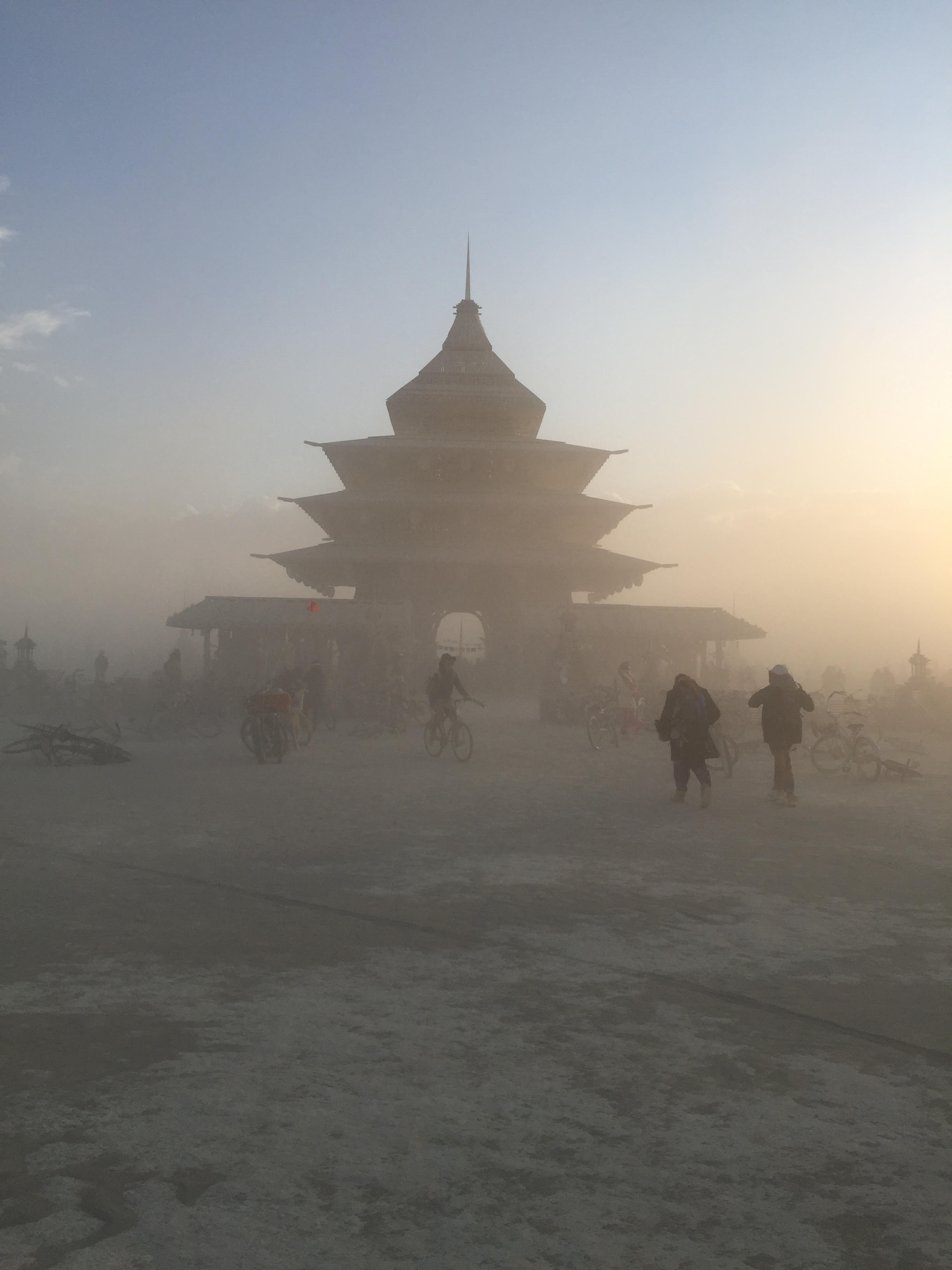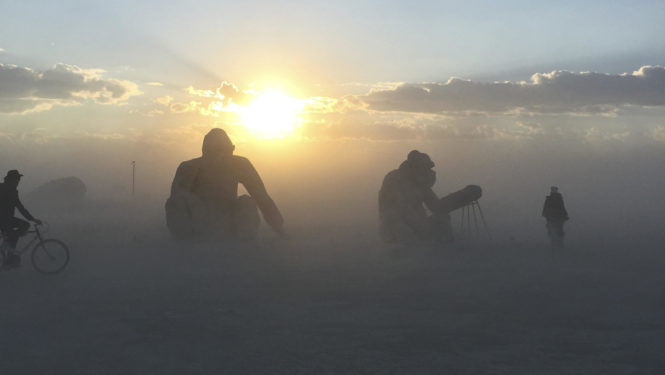Part of the I, ROBOT series
Cogito Ergo Sum
In 1637, before we, as a human race, knew what a robot was (although there was the notion of a “machine, not yet invented, that could…”) we crossed a threshold and became “robots.”
380 years later we are slowly realizing that something has gone missing.
When Descartes uttered these words, “I think, therefore I am,” the axis of the world shifted.
In spite of his devotion to be an unrepentant rationalist, Descartes recognized there is a duality in life, but he missed its emotional value. His efforts and those of his contemporaries ushered in an era of unparalleled scientific progress, of the advent of rational humanism, and that in turn begat the dawn of enlightenment. We still wrestle with what “enlightenment” means: is it science or poetry, or both?
Fast forward to 1950. The Turning Test was introduced with the challenge: “I propose to consider the question, ‘Can machines think?‘” While in 1950 this question seemed progressive and tantalizingly unattainable, it also represents the way that we have, for the last 380 years, deluded ourselves into believing that “thinking” was the highest order of human accomplishment. Over these near four centuries we have molded ourselves further and further from what makes us human.
At this critical moment, when Burning Man has embraced the theme “I Robot,” we should be tempted to knock the Turning Test off its pedestal as a test for being human, and at the same time turn Descartes on his head. We could start with, ”I feel, therefore I am,” but that would not go far enough “To be human,” I suspect, would require ”I care, therefore I am,” and as for Turing, perhaps this modification: “I propose to consider the question, ‘Can machines care?‘” and most importantly, not “pretend to care.”
No matter how clever an AI system can be programmed, or respond to stimuli, it cannot yet care. It cannot dream, it cannot believe in something greater than itself, that is also, already part of itself … humans are fundamentally able to embrace paradox. The real problem is, we do this continuously, but we are largely unaware of when, how and why we do it. We seek a rational “why” to explain what we feel, and if we take this too far, we suppress those feelings that don’t fit tidily into our new found rational boxes. The machine can follow a linear, verbal and/or mathematical logic. This leaves so much of the beauty of life behind. A solely equation-based existence does not involve care, or a notion of the sublime.
Another way to look at this is to recognize some of the problems we face today, in this modern world. We have issues with “integrity,” with social justice, with racial inequality, with gender disparity — with the whole notion of binary gender — which has led to unseemly war over “transgendered” bathrooms, or pretty men and strong women. These days we are confronted with a social divisiveness and disconnection that seems to be creating an alarming divide between large sectors of society.
We try to address these issues in a variety of ways, but three stand out.
In order to create and maintain a vibrant society, we generally start with a legal system. Laws define our rules of conduct, what is acceptable behavior, and to punish what falls outside of that constraint. The law protects our right to property, equal rights to dignity — it is based on words, on defining relationships between things, and most importantly, aspiring to create a logical diagram that encompasses all things in a clear repeatable sense that can be applied universally. Laws are critical to civilized society, but they come with a deeply heavy set of constraints. If you follow the logical extension of this system, you tend to do less and less, because of a concern for potential negative occurrences or conditions, often times at statistically absurd levels. One is increasingly inclined to inactivity, because the law “should” take care of it.
After laws, we create social programs. Social programs fund wonderful things like poverty remediation and school lunches. We invest in programs that will help people thrive and pull themselves into economic, educational, or mental stability. These are forward thinking, creating a context for a hopeful future, but in themselves they only create a platform, they don’t invite you to care.
If you want people to care about each other, and to willingly treat each other with dignity and respect, you need culture … you need the arts.
Today, especially these days, if you don’t want someone to pick up a weapon in anger and pain, then you need to reach deeply, into their heart and show them the compassion and beauty of the human spirit. Laws, Rules, and Social Programs can’t do that, but in ART, there is a powerful prospect for change. In the last few decades we seem to have forgotten the power of culture. Culture can tempt you to care, tempt you to love, show you the vast potential of the human condition, and in an ideal context it will ask you to do this both in your heart and your mind, in the whole of your being, because it has moved you to Care.
If we delve deeper into the power of art, we may find that there are multiple sides to this equation. On the one hand, we have all, at some point in time experienced art, its ability to carry emotional and cultural content, and its power to create change. The other side of this equation is the creation of art.
In the act of creation, the artist commits a part of themselves to the work, a piece of their soul.
They push out into the external world some part of their inner world. In the act of sharing this, of expressing this, it becomes a gift, and in the context of a community it is an exchange of humanity, of human care. It can take the form of joy, bliss, and elation, it can also take the form of pain, frustration, and sorrow. With whatever emotions we express through our art we are fundamentally sharing what it means to be human.
Self expression is our sweet spot, where we learn to know ourselves, what makes us unique and special, and by sharing ourselves with our community through art, we learn how we are part of that community as well.
While it is tempting to explain what it means to be human in a measured, linear, and rational way, that would miss the entire point — as machines, we relentlessly attempt to do this thru science. As humans we need to feel, to dream, to experience the pure emotional joy of an arbitrary moment, and ultimately to care about both ourselves and by extension, each other, and embrace the paradoxical duality that makes that bit of illogic so precious. The creation of art is just as crucial to that process as laws and social programs are to the societies we build around us.
Robots can be programmed to follow a style, to replicate a set of conditions, but only as well as the programming was constructed, only as well as an algorithm can predict an outcome. We, as humans, on the other hand, continually reprogram of our circuits, constantly changing our minds. Our ingenious adaptability, our vast and relentless diversity, has proven to be essential to our survival as a species. We don’t conform. While we create art to share, we also create it to provoke, to challenge, to “rage against the machine,” whether that machine is human or not. The fact that 99% of humanity might disagree with you is part of the charm.
Hell is everyone agreeing on everything. Heaven is creative tension and mystery.
In the dust there are endless potentials. I smile at the impossibility of this existing … at the madness of encountering deeply personal, insanely profound art. The girl gifting pineapple slices at the Temple, at that moment when the sharing of pain became almost unbearably intense. With a simple smile she brought the humanity back into my journey. I don’t want this to occur because a machine programmed it, I want it to exist because she was compelled to bring this gift, because she cared, and as she gave it to me, it was a human connection. We cared together in that moment and we could feel the whole universe singing with us.

Playa Dawn 2017
The sun rises
over a cold and dusty Playa ….
we are riding hard against the wind,
which kicks up the ever present dust,
goggles,
bandanas
determination
are required
in this extremely harsh environment
of epic proportions.
Here the dust is like a poetic myst,
wherein surrealistic objects,
people,
chaos
and beauty
appear out of nowhere
then disappear just as quickly.
We are making our way to the Temple,
it is a long ride
on our cheap playa bikes,
The Temple,
a truly magical place,
which has no parallel on this earth,
is a place for public grieving,
for release,
for sharing
a stranger’s pain,
and while that last bit sounds counter
to all that civilization has taught you to avoid,
in that moment,
there on the playa,
you embrace it
with all that is human inside you.
Top photo: Seeing Humanity for What It Is by Laurence Vallieres, photo by John Marx


Great piece! John…I think you nailed it on caring being the common base of all of us. Also, with the great difficulty in duplicating/programming the true ‘caring’ into robots. Most likely it will just be looked at as more detailed programming by humans ‘consciousnessing’. Although, if we do ‘be’ outside the box and consider consciousness as truly being all encompassing as both the form, the formless and the allowing, robots would just ‘be’ as well, being the silent observer that allows all to be exactly as it is (no script for life). Then, AI making things better/worse than they ‘apparently’ are or have been, is no big deal. Then caring will be shown to be even more of the base of who we apparently are. Maybe, we won’t have too much to worry about as far as AI turning on humans and taking over the world (as in other previous iRobot topics) . We’re are already apparently spending a lot of moments outside your comfort zones anyways. So…instead, maybe somehow robots will be showing us humans how everything is just happening…seeing is happening…hearing is happening…tasting is happening …thinking a happening…feeling is happening…concepts of everything imaginable are just…happening. They’ll be nudging us into seeing ourselves as not being separate from any one thing, but reveling oneness in everything. Dang!…once we stop with all the unnecessary dam thinking…learn to be still/silent for two halves of a second…it’s a start. ’I think, therefore I am’…Descartes, that was most likely the necessary step to show us contrast, of what we’re not. I can see that we are most defiantly not our thoughts or our constant self narrative. The essence of caring/love comes through as the base of who we apparently are. Thinking needs to be tamed, this much we know. When a robot can ‘understand’ ‘understanding’ on it’s own, with zero programming, then we’ll know that caring/awareness/love is showing up in yet another form, another level. I feel it’s gonna be perfectly fine, right up until it’s not…but then, when it’s not…of course that’ll just be another concept shining through pure conscious awareness. Caring is always here now…we just have to ‘be’ it.
Report comment
Beautifully written piece. Thank you John and BM.
Report comment
Beautiful Article!! I’m an admirer of Alan Turing and all that he gave us of his work and life as well as the Turing Test that you mentioned. I believe it’s spelled Turing. ;)
Report comment
Comments are closed.